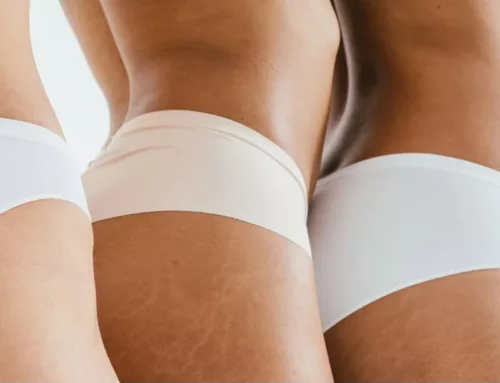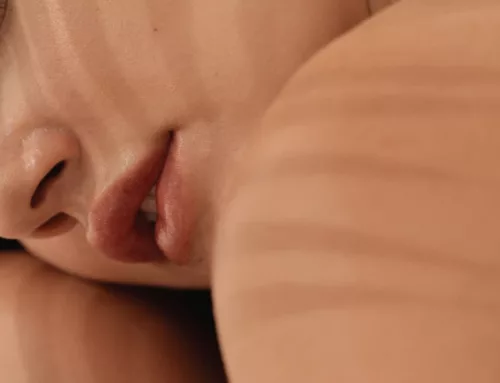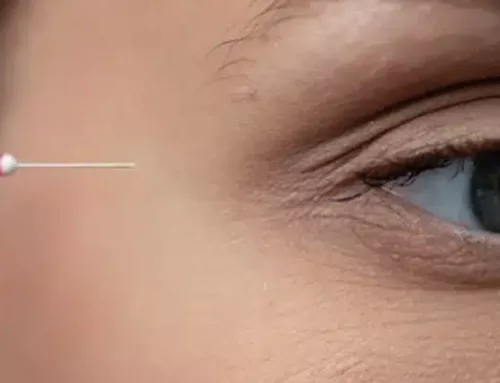Stretching The Truth: Treating Stretchmarks
Busting Unrealistic Stretch Mark Treatments
In this blog, we’ll cover:
- What exactly is a stretch mark?
- Types of stretch marks
- How stretch marks occur
- Treatments to lighten and fade stretch marks
Although stretch marks are a natural part of life, people often seek methods to reduce their appearance. Many companies market products that claim to prevent or “erase” stretch marks – even when there is no clinical data supporting the efficacy of these treatments.
What exactly is a stretch mark?
A stretch mark, also known as striae, is a common skin condition that appears as visible lines or streaks on the surface of the skin. Stretch marks typically occur when the skin stretches or shrinks rapidly due to various factors such as pregnancy, rapid weight gain or loss, growth spurts during puberty, and certain medical conditions.
So how can people treat stretch marks without wasting money on misleading products?
On The Skin Report podcast, Dr. Simran Sethi, an Internal Medicine doctor and Founder of RenewMD medical spas and Skin by Dr. Sethi, shares the science behind stretch marks. Read on to learn more about stretch marks, why they occur, and how to fade them with treatments that will work — and won’t just stretch your budget!
Types of Stretchmarks and How They Occur
Stretch marks can be classified into one of two categories, depending on their development. Striae rubra present as early signs of stretch marks and appear reddish-purple, although they can appear more pigmented in darker skin tones. As time passes, these stretch marks become striae alba and appear lighter, thinner, and more scar-like in appearance.
Stretch marks are commonly associated with pregnancy, however they can occur for a number of other reasons. People can develop stretch marks on the abdomen, breasts, upper arms, hips, lower back, buttocks, and thighs due to:
- Oral Steroid Use to treat chronic diseases, as steroids thin the skin, making it more prone to developing stretch marks.
- Growth Spurts that occur in puberty and can result in light stretch marks, usually on the upper arms or back of the legs.
- Breast Enlargement due to natural growth or breast augmentation procedures can cause stretch marks.
- Muscle Enlargement when muscle size significantly increases, especially in areas where muscles aren’t typically large, like the upper arms.
Of course, pregnancy is the most common cause of stretch marks occurring, and these tend to be extensive and the most difficult to treat.
Misleading Treatment Methods
Regardless of how or where they occur, stretch marks all form when the skin is stretched past its ability to maintain elasticity and the skin barrier. Stretching the epidermis beyond its capacity causes skin elastin and collagen fibers to rupture and become unable to reconnect and heal normally. The tears in the skin’s connective tissue eventually reconnects by forming much thinner skin which reveals its underlying layers.
It is important to know the science behind stretch marks to understand how they can and cannot be treated. For example, many stretch mark creams and moisturization products claim to help prevent stretch marks from occurring. However, no level of skin hydration can prevent the skin from stretching past its breaking point, which is the cause of stretch mark formation.
Unfortunately, there are not any definitive topical products that prevent or erase stretch marks. Although many companies make these claims, they do not have the data to support themselves. As a result, many people hoping to see their stretch marks vanish ultimately waste their money on ineffective products.
So, what can we do?
Treating Stretch Marks
How can people effectively fade and treat their stretch marks without wasting money on misleading products?
Retinoid and tretinoin can improve the appearance of stretch marks but Vitamin A products such as these can sometimes irritate the skin. Hyaluronic acid or centella have been found by researchers to be able to help prevent stretch marks. But in the end, the most these treatments can do for stretch marks is maybe improve their appearance if you treat them early enough. Stretch marks, especially old and deep ones, may not completely go away.
Fortunately, some treatments can lighten stretch marks, making them less visible.
However, these treatments can’t be found on Amazon or in the aisles of your local beauty store. Tough skin conditions require serious treatments. Therefore, patients should seek professional help for their stretch marks to achieve real results!
Patients can visit medical spas, where professionals will examine the severity of stretch marks and provide treatment recommendations to lighten and improve their appearance.
Treatments To Fade Stretch Marks
The best treatment to fade the appearance of a patient’s stretch marks will depend on their skin tone and the severity of their condition. On the podcast, Dr. Sethi explains how she treats patients that visit her practice to fade their stretch marks.
Mild Stretch Marks on All Skin Tones
For patients with mild stretch marks, Dr. Sethi starts them on 1% retinol and recommends a series of 6-8 micro-needling sessions. Retinol and micro-needling together can lighten and thin stretch marks, reducing their appearance.
Moderate to Severe Stretch Marks in Skin Types 1-3
Patients with lighter skin tones and severe stretch marks will also be treated with 1% retinol. In addition, Dr. Sethi recommends that patients with red or purple stretch marks treat them with a series of pulse-dyed laser treatments to lighten the color. It can also improve skin texture and appearance as well as increase collagen production over time. However, this can be an expensive treatment method for limited improvement.
Moderate to Severe Stretch Marks in Skin Types 4-6
Dr. Sethi starts these patients with 1% retinol and recommends that patients with darker skin types treat their stretch marks with 4-6 sessions of micro-needling with radiofrequency treatments. Pulse-dyed laser treatment has a high risk of hyperpigmentation of the stretch marks in darker skin tones, so micro-needling with radiofrequency is a safer alternative. These treatments can yield limited results that slightly lighten the stretch marks and tighten the skin to some extent.
While there is no way to completely remove or prevent stretch marks, professional treatment procedures can help to fade their appearance. Listen to Season 1, Episode 39 of The Skin Report podcast to learn more about stretch marks.







